
|

|
Forum Index : Microcontroller and PC projects : 737 MAX AoA and MCAS issue...
| Author | Message | ||||
| Paul_L Guru Joined: 03/03/2016 Location: United StatesPosts: 769 |
The only way to invert any of these transport aircraft is by flying a positive G Chandelle otherwise the fuel pickups in the wing tanks run dry. It doesn't help much to cut off the fuel to the engines. https://www.youtube.com/watch?v=Ra_khhzuFlE The 737 MAX modification involved the substitution of higher bypass fan engines which are larger in diameter than the earlier engines. It is exactly correct that these engines had to be hung on different Rohr pylons which held the engines further forward and higher than the earlier pylons. This positioning exacerbates high thrust resulting in a pitch up action of all previous Boeings. This means that pitch trim requires even more sampling. It now has to account for fuel burn changes in longitudinal CG, speed changes in longitudinal center of lift, but thrust changes applied well below the induced drag centerline. The changes to pitch trim control were haphazard kludges at best! I am actually very happy that I decided not to work for Delta, Boeing, United, BOAC or Lufthansa after Pan Am folded up. I like goofing off and I didn't want to move away from NYC. Paul in NY |
||||
| CaptainBoing Guru Joined: 07/09/2016 Location: United KingdomPosts: 2171 |
Thanks for that link Paul! I saw this years ago but I had forgotten what it was all about and it had become "lost" to me... restored... my hero!!! |
||||
| Boppa Guru Joined: 08/11/2016 Location: AustraliaPosts: 816 |
The original engines were indeed very 'slender' in comparison, plus the original 737 design was VERY lowslung in the first place- and designed that way intentionally The original design was to be used into smaller 'regional' airports that didn't always have 'high' motorised stairs for disembarking, or lifting equipment for luggage loading, so it was purposely built low to the ground so that smaller airports could handle it with smaller (and cheaper) handheld stairs and load luggage straight from ground level or the back of the transport This is why they had to move the engines forward and up, as the newer (quieter and more fuel efficient) engines were physically larger- they couldn't 'make the landing gear taller' (although they did as much as possible)- because they HAD to fit into the existing wheel welldesign- making the wells larger was a major structural issue, involving major mechanical changes to the interior struts etc, and this wasn't allowed under the 'grandfathering' clause- which Boeing was desperate to keep alive as a cleansheet design is both lengthy in approval times and requires many features that the older grandfathered 737 didn't require due to the age of the original certifications- more cost again... 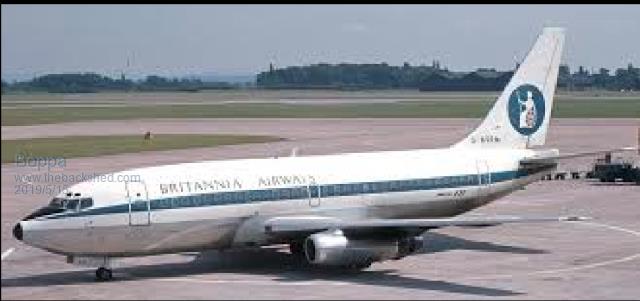 737-100 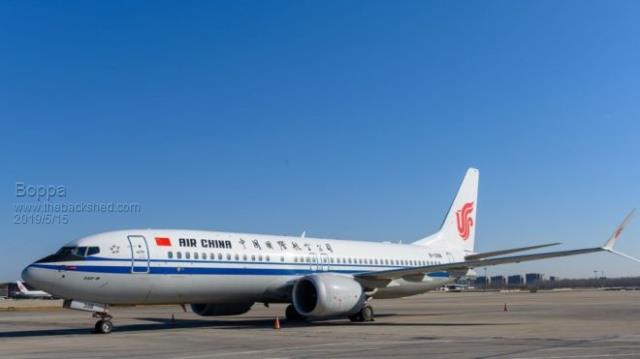 737MAX In effect, it's an EH Holden with a efi Commodore v6 shoved in it, running on the original brakes and tyres- but its got a flash new LCD dashboard, and to stop you shredding the old crossplies at every green light, they put a 'ghost in the machine' bit of software that backs off the power when it starts smoking the tyres- but when it fails, goes to full throttle instead and stays there...  |
||||
Grogster Admin Group Joined: 31/12/2012 Location: New ZealandPosts: 9800 |
[Quote=Boppa]I suspect (as do many pilots and such over at PPrune) that they were attempting to get the NG 'configuration' of electric trim yoke buttons to work with autopilot off, instead they got the MCAS back... and boy was HAL P.O.'d at being turned off, so he drove them into the ground....[/Quote] Crikey, yes, he seemed to be, didn't he....  Yes, that Tex video is one I also remember seeing ages ago, and is good value.  @ Boppa - thanks for posting the photos. They really do show how drastic a size difference there is in the old vs new engines!!! And I rather like your Holden analogy!  Smoke makes things work. When the smoke gets out, it stops! |
||||
| isochronic Guru Joined: 21/01/2012 Location: AustraliaPosts: 689 |
I am a bit surprised to see DC-10 's still being used for freight .. Is that good ?? I thought they were deemed a bad design after the various, uh, problems ... the engine-in-a-pod config still seems the most reliable (?). Any word on the future ? There are rumours of electric-fan planes, powered by gas turbines, I guess the general layout will change a bit. |
||||
| Boppa Guru Joined: 08/11/2016 Location: AustraliaPosts: 816 |
To show big they are... 737max 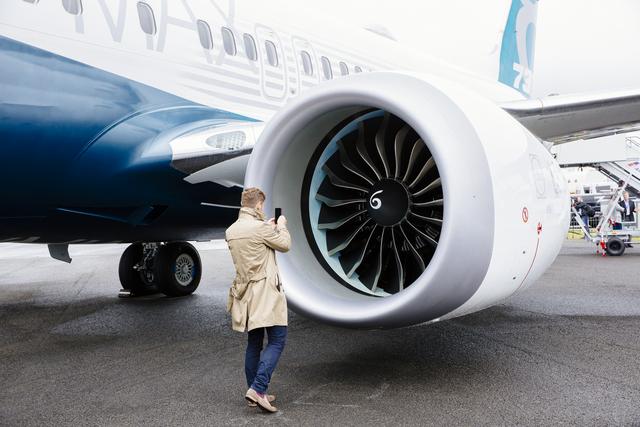 737-100 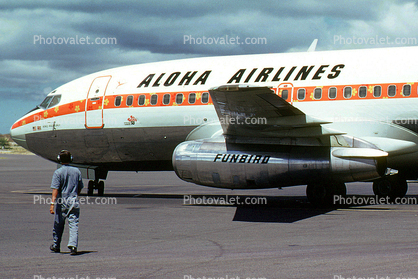 No wonder they had clearance issues, the 100 engine would get swallowed by the max engine... Looks like one of those monster trucks with the 12ft high wheels LOL |
||||
| Boppa Guru Joined: 08/11/2016 Location: AustraliaPosts: 816 |
They did the fix, but too late- the public wouldn't fly on them because of their 'crash rep', so they got relegated to cargo I wouldn't be surprised if the MAX goes the same way, it's reputation is pretty toxic right now, and IF they get back in the air again (well it's likely they will- eventually)- that thought will always be lurking in the back of every MAX passengers mind 'did they REALLY fix all the bugs???' So they may well end up suffering the same freight, sorry, fate...  |
||||
Grogster Admin Group Joined: 31/12/2012 Location: New ZealandPosts: 9800 |
If they used the same airframe for the MAX, with those gigantic engines hanging off the wings, I also wonder about the load(weight) of the new big engines on the old airframe design.... Smoke makes things work. When the smoke gets out, it stops! |
||||
| Paul_L Guru Joined: 03/03/2016 Location: United StatesPosts: 769 |
@Boppa ... nice find for the 737 functional diagrams. The new fat engines don't provide any more power than the old skinny engines. The P&W JT3D-3F used on 707/720/727/737 aircraft could be setup to provide up to 23,000 pounds of thrust. The newest high bypass GE engines provide 26,000 pounds. From memory here's a list of some of Pan Am's Boeing aircraft with their maximum gross takeoff weights, combined thrust for all engines, and weight to thrust ratios. A/C TYPE MGTOW THRUST W/T B737-100 128,000 26,000 4.9 B737-500 140,000 32,000 4.4 B737-900 187,000 52,000 3.6 B727-100 169,500 36,000 4.7 B727-200 171,600 48,000 3.6 B707-100 258,000 64,000 4.0 B707-300 332,000 64,000 5.2 B747-100 824,000 140,000 5.9 B747-200 832,000 256,000 3.2 B747-400 865,000 280,000 3.1 The extreme difference in weight/thrust ratio between the 707-300 = 5.2 and the 747-400 = 3.1 will result in a sea level MGTOW takeoff roll to rotation to change from about 3,600 feet for the 707 to about 3,300 feet for the 747. This means that any of these aircraft will operate out of a sea level 8,000 foot runway with enough space to stop after reaching rotation speed. The larger diameter high bypass engines are really acting more like ducted turboprops than turbofan engines. The JT3D-3F produced about 62% of its thrust with the fan, these new high bypass engines produce up to 83% of their thrust from the fan. They have reduced fuel consumption by about 28% below the JT3D-3F and they are quieter because there is less high velocity air coming out of the tail cone. Here are some very rare pictures from September 1992 of N747PA, the first B747-100, delivered to Pan Am in 1969, beginning its last flight to the scrapyard. In the first photo two pitot static masts and an angle of attack sensor are clearly visible about 16 feet up above the head of the left end of the ground crew. The second photo shows the traditional salute by the fire department when an aircraft leaves for the last time. The third shows the final low altitude fly by. Paul in NY 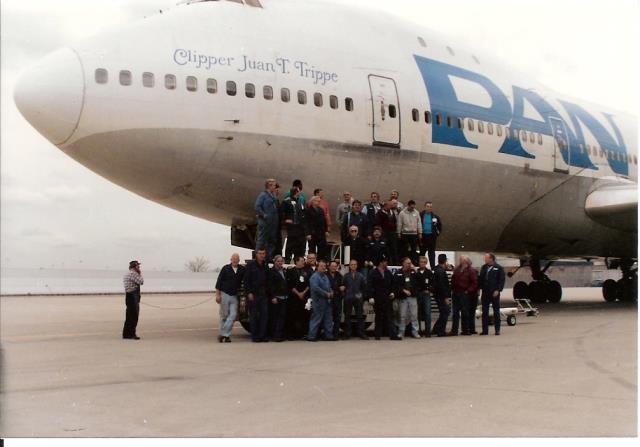 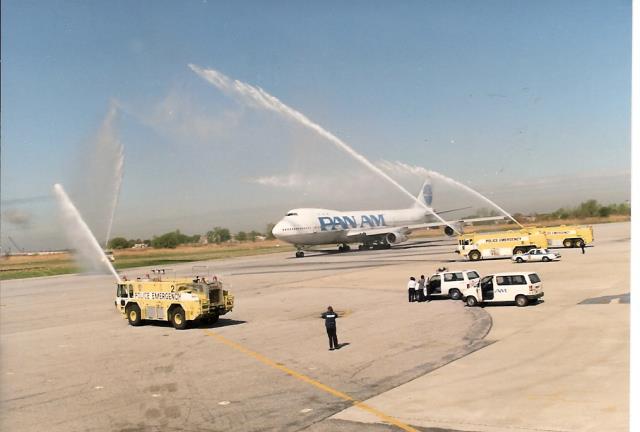 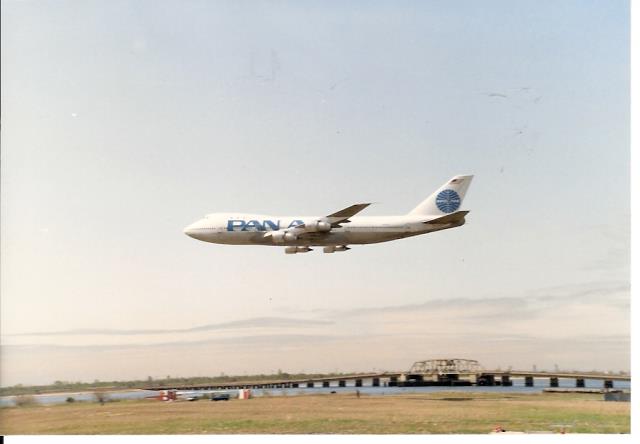 |
||||
| CaptainBoing Guru Joined: 07/09/2016 Location: United KingdomPosts: 2171 |
shame to see an big old bus go on her last flight. On 24th October 2003, I was fortunate enough to have been working British Telecom... it wasn't that so much but that I was in Harmondsworth Exchange when the last three Concordes came in to Heathrow within minutes of each other. I missed the first one but got to the roof in time to catch the last two landing (on 27 right so it couldn't have been better) and the parade: 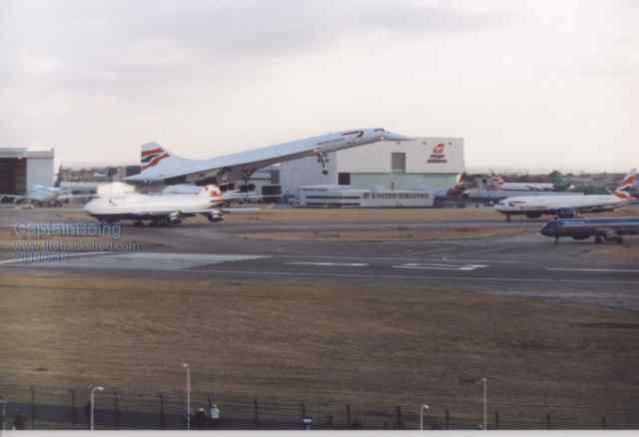 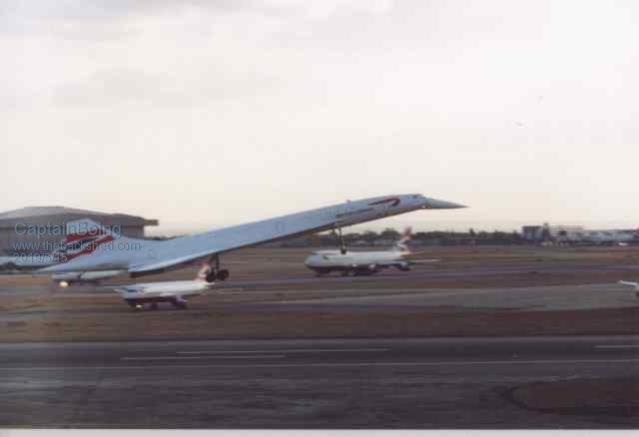 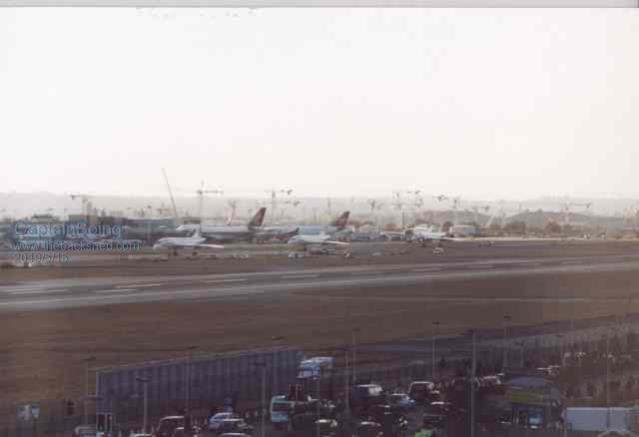  |
||||
| Paul_L Guru Joined: 03/03/2016 Location: United StatesPosts: 769 |
Both BOAC and Air France used to rent bays in hangar 17 from Pan Am for the Concorde when they had to do engine changes or jack the aircraft for any reason. It's not a good idea to do such work outside with winds blowing ... the aircraft tends to get blown over too easily. They would occasionally ask me get involved in diagnosing avionics problems because they had limited maintenance at JFK but it was Pan Am's maintenance base with over 6000 people. I have to say that Pan Am was completely correct for cancelling our initial order for 64 of those aircraft in 1971. Najeeb Halaby, who was Pan Am's Chairman in the 1970s and was previously the FAA director, actually piloted a prototype and did not like the way it handled so he killed the order. I'm 6 foot 3 inches tall and I couldn't stand up in the passenger cabin or the cockpit, sit in any of the passenger seats comfortably, or climb into the pilot seats without skinning my shins. It was usually gross weight limited on westbound transits from LHR or ORY to JFK and had to limit baggage and cargo and sometimes even passengers. The pressurization controller never could keep up with the climb and descent rates. They would repeatedly suffer damage to the flaps if the wheels kicked up debris on a runway. The hinged nose would get stuck in the raised position if it encountered heavy icing on descent to JFK and they would have to stay in a low altitude holding pattern to wait for the ice to melt, or try to land with the nose up. I think they only built 14 of them after Pan Am cancelled our order. Too bad .... it sure was a pretty aircraft. I would occasionally walk up to the roof of the hangar for the 1 pm Air France departure. My vantage point was 70 feet above ground and 2400 feet from the runway end. The acceleration was unbelievable. It would rotate about 2000 feet down the runway and immediately begin a 6000 feet per minute climb rate. When it reached the other end of the 15,000 foot runway it would be at 4,000 feet altitude! Runway view from hangar 17. It's too bad the B2707-300 was never built. It was also killed when Pan Am cancelled our initial order for the first 84 aircraft. B2707 Wikipedia Pan Am, after WWII, was always first in line to buy new aircraft, grabbing the first batch of the DC4, Lockheed Electra, DC6, DC7, 707, DC8, 727, and the first 62 747-100. We did not operate any B737s. They were just too small and were aimed at short flight duration routes. Paul in NY |
||||
palcal Guru Joined: 12/10/2011 Location: AustraliaPosts: 2027 |
An interesting article on Nine.com.au about this HERE Don't know if the link will hold up as their news keeps changing. "It is better to be ignorant and ask a stupid question than to be plain Stupid and not ask at all" |
||||
| Boppa Guru Joined: 08/11/2016 Location: AustraliaPosts: 816 |
Paul is correct- these engines aren't more powerful (in fact one variant has less power)- but were fitted to meet Boeings requirements for a more fuel efficient- and more importantly- quieter aircraft- to meet the release of the Airbus A300neo series... In several aspects I think the Neo caught Boeing completely off guard- they had nothing in their lineup to match it except the 737 series- but these were an 50 year old design, with excessive fuel consumption (a major factor when the designs were first started, as that was when fuel prices were skyrocketing)- and very noisy- limiting their use in many airports, with them banned from some entirely They didn't have the time to cleansheet a new design as that does take a long time to do, they were losing sales at a simply massive rate to Airbus in that size aircraft, and they didn't have any other designs that could be used without major redesigning- so the lowslung 737 became the 737MAX And the rest is history... Crude oil prices leading up to the MAX program (the MAX was first started around the 2009, you can see why a nearly 30% fuel saving was attractive to buyers with the recent memory of $160 a barrel of oil prices, and just after the 2008 financial crash when credit was both hard to get and expensive 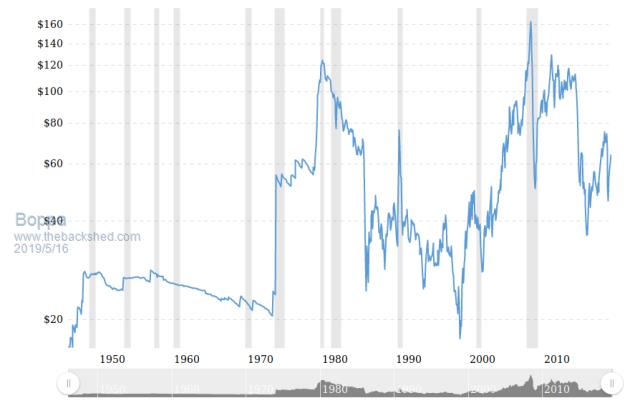 By the time they announced the MAX in 2011, prices had already started marching higher again- and so the MAX program continued, with the first plane flying in 2016 |
||||
| Cherokeecruiser Newbie Joined: 25/02/2015 Location: AustraliaPosts: 25 |
Hi All This is a great thread. Been following with much interest I believe, (and am happy to be corrected) that the 737 100/200 had JT8D rather than JT3D engines. The JT8D got up to 17,400Lbs thrust on the -17R. |
||||
| Paul_L Guru Joined: 03/03/2016 Location: United StatesPosts: 769 |
Actually the newest iteration of high bypass engines don't decrease fuel consumption all that much. What they do is radically decrease airspeed through the fan ducts which reduces aerodynamic abrasion and wear and makes it possible to use softer alloys in the engine case. It's a case of get the titanium out. The side effect is to decrease noise from the wind shear around the fan duct exit. The big jump in efficiency came with the change from the JT4 non fan engine to the fan JT3 about 1964 which reduced fuel burn by 40% from the JT4. Here's five shrunken pictures of the first "707", the short prototype, which Boeing called the B367-80, the first at roll out in 1957 with JT4 non fan engines, 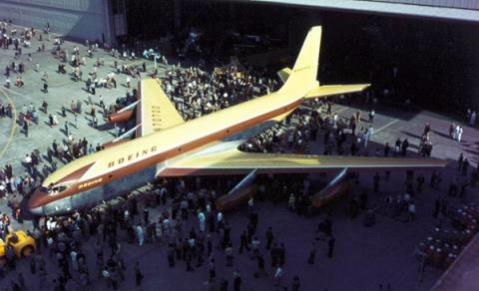 then with JT4 non fan engines upside down when Tex Johnson decided to sell aircraft, 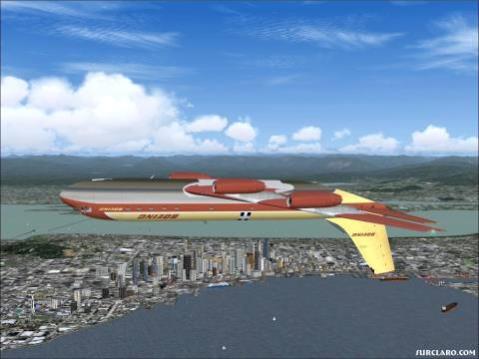 then in flight with JT3 fan engines about 1966 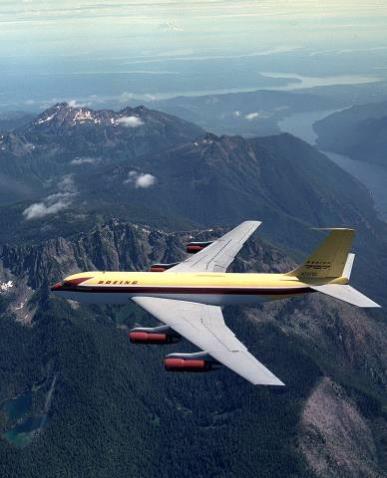 then mothballed with JT3 fan engines at Davis AFB about 1969 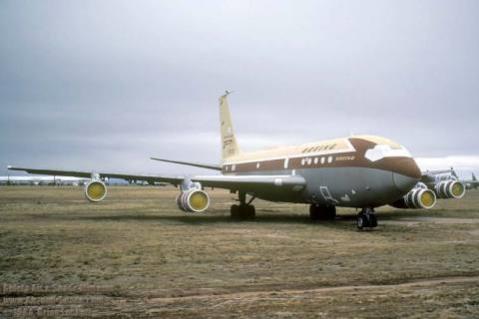 and finally on display in the Smithsonian. 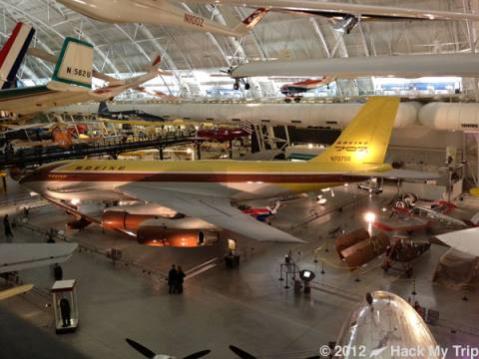 Another big jump in efficiency came thanks to the work that Burt Rutan and a bunch of other genius aerodynamacists at NASA did in the 50s, 60s and 70s. They designed the lifting body flying bathtub, the Rutan Voyager, the Rutan EZ with the canard wing, the lifting body fuselage for the space shuttle, the flat bottom lifting body of the 747, the NASA super critical airfoils, the wing tip winglets that reduce wake turbulence and a whole bunch of other stuff. These advances were slowly incorporated into all of the Boeing aircraft down through the years. The 707-300 burns 35% less fuel than the 707-100 and it has a MGTOW nearly 110,000 pounds greater, and the 747-400 burns 28% less fuel than the 747-100 with the same MGTOW! Improvements in the fuselages, airfoils and engines come very slowly in small iterative steps and they take decades! Only someone as old as me has seen them all, from the DC4 to the A380, as they occurred. Paul in NY |
||||
| isochronic Guru Joined: 21/01/2012 Location: AustraliaPosts: 689 |
This is fascinating ! I got a bit blase about aircraft but now the bug has bitten me badly  . .Saw a movie intro from 1973 with an early 747, and was intrigued - it was so different from later versions. Like me, many people have not seen the originals. Would not like to be in the engine business though !! RR woes |
||||
| Paul_L Guru Joined: 03/03/2016 Location: United StatesPosts: 769 |
The choice of engine type was up to the customer airline. Pylons were available to hang JT3s, JT8s, GEs, and Rolls-Royce. Most airlines chose the JT8D-3F since these were mostly used in the U.S. on short routes and P&W had better support in the U.S. It was very difficult to get 737 aircraft across the pond to Europe since they didn't have HF radio systems or life rafts. Pan Am had about 22 B727-100 series aircraft which were equipped with life rafts, HF comms and LORAN receivers. We used them in the Caribbean. But, we also had about 42 727-100s without HF or life rafts but with UHF communications which were used in Itra-German service. We got those operating rights due to the support we had provided to the Berlin airlift. Those aircraft could not normally cross the pond. We did the composite basic service in hangar 17 at JFK. We would ferry these aircraft across the pond by strapping a small life raft to the first class seats and have the 727 wait on the ground at Gander or Shannon. When a regular 707 passenger flight passed overhead the 727 would take off, climb, rendezvous with the 707 and fly formation with the 707 across the pond. The 707 would provide communications for the formation flight using its HF systems and over-water navigation using its octant port and human navigator to do celestial navigation. The distance from SNN to OCX was about 1975 miles which was just within the range of the 727-100 when empty. Extended over-water operation is still more complicated than flying continental routes using VOR navigation and tight ATC control. R-nav, GPS and/or INS make it simpler but you still need HF comms, Mae Wests and life rafts which adds a lot of weight. You select engines, JT8 vs JT3, based on your route structure. Paul in NY |
||||
| The Back Shed's forum code is written, and hosted, in Australia. | © JAQ Software 2025 |